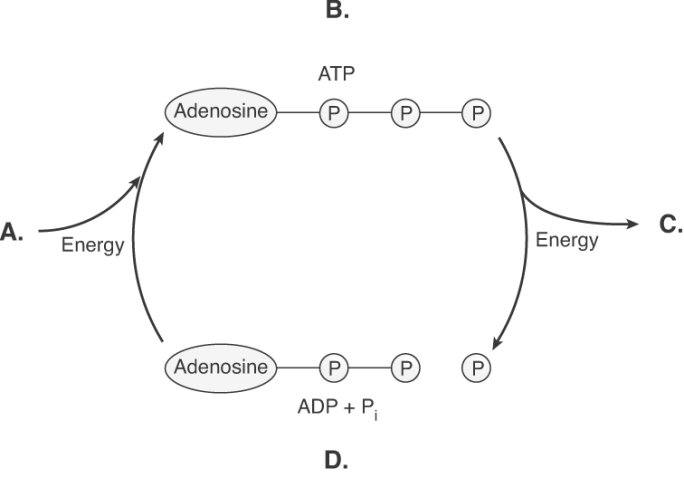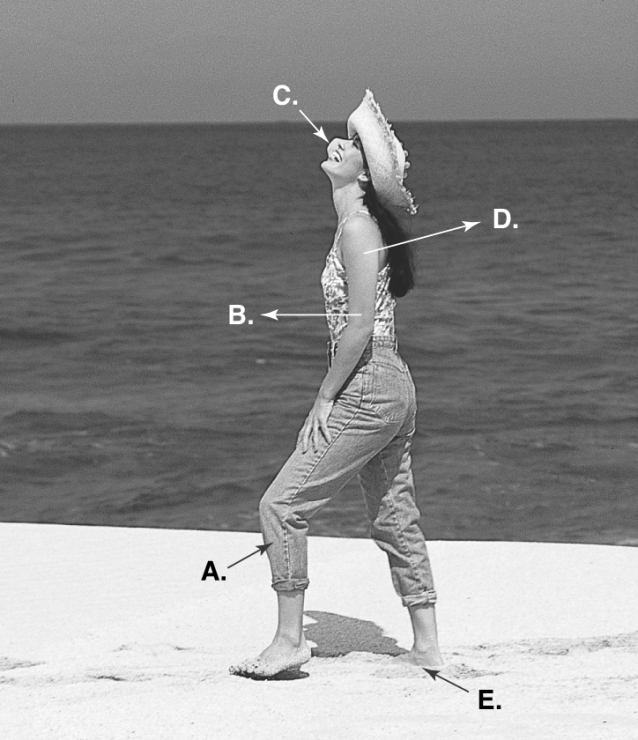A) carbohydrates
B) lipids
C) proteins
D) nucleic acids
F) A) and C)
Correct Answer

verified
Correct Answer
verified
Multiple Choice
Which of the following minerals is mismatched with its function?
A) calcium - bone formation
B) zinc - hemoglobin synthesis
C) potassium - muscle and nerve function
D) cobalt - erythrocyte production
E) selenium - component of many enzymes
G) C) and D)
Correct Answer

verified
Correct Answer
verified
Multiple Choice
Why is it important that glucose be converted to glucose-6-phosphate once glucose enters a cell?
A) This form is easier for cells to metabolize.
B) Glucose can't diffuse out of the cell if it is in this form.
C) The cells can easily excrete this molecule.
D) It becomes a long-term storage molecule for glucose.
E) It can now cross the plasma membrane.
G) A) and D)
Correct Answer

verified
Correct Answer
verified
Multiple Choice
Which of the following events would occur when the environmental temperature is considerably lower than body temperature?
A) sweating
B) vasoconstriction of the blood vessels of the skin
C) increased heat loss through the skin
D) decreased muscular activity to maintain heat
E) vasodilation of the blood vessels of the skin
G) All of the above
Correct Answer

verified
Correct Answer
verified
Multiple Choice
 -The diagram illustrates ATP coupling of catabolic and anabolic reactions. What does "C" represent?
-The diagram illustrates ATP coupling of catabolic and anabolic reactions. What does "C" represent?
A) ATP breakdown
B) anabolism
C) catabolism
D) ATP production
F) None of the above
Correct Answer

verified
Correct Answer
verified
Multiple Choice
Match the vitamin with its function in the body. -pyridoxine (B6)
A) required for the synthesis of clotting factors (prothrombin)
B) is a component of the coenzyme FAD
C) promotes calcium and phosphorus use
D) involved in amino acid metabolism
E) a primary constituent of coenzyme A
G) B) and E)
Correct Answer

verified
Correct Answer
verified
Multiple Choice
A compound composed of three fatty acids attached to a glycerol molecule would be a
A) monoglyceride.
B) diglyceride.
C) triglyceride.
D) phospholipid.
E) cholesterol.
G) B) and E)
Correct Answer

verified
Correct Answer
verified
Short Answer
__________ are chemicals that are taken into the body and used to produce energy or provide building blocks for new molecules.
Correct Answer

verified
Correct Answer
verified
Multiple Choice
How many ATP and NADH are produced by glycolysis of one glucose molecule?
A) 2 ATP and 1 NADH
B) 4 ATP and 4 NADH
C) 2 ATP and 2 NADH
D) 1 ATP and 2 NADH
F) All of the above
Correct Answer

verified
Correct Answer
verified
Multiple Choice
Match the function or term with the appropriate organic molecule. -structural component of plasma membrane
A) carbohydrates
B) lipids
C) proteins
D) nucleic acids
F) B) and C)
Correct Answer

verified
Correct Answer
verified
Multiple Choice
Excess triglycerides are stored in adipose tissue. Adipose tissue functions
A) to assist the body in temperature homeostasis.
B) pads and protects.
C) energy storage.
D) insulates.
E) All of these choices are correct.
G) All of the above
Correct Answer

verified
Correct Answer
verified
Multiple Choice
 -The picture depicts heat exchange. What does "B" represent?
-The picture depicts heat exchange. What does "B" represent?
A) evaporation
B) conduction from hot sand
C) radiation from sand
D) radiation from sun and water
E) convection from cool breeze
G) D) and E)
Correct Answer

verified
Correct Answer
verified
Multiple Choice
An example of an incomplete protein food is
A) eggs.
B) meat.
C) milk.
D) leafy green vegetables.
E) cheese.
G) C) and D)
Correct Answer

verified
Correct Answer
verified
Multiple Choice
A food that contains all nine essential amino acids is called a(n)
A) plasma protein.
B) incomplete protein.
C) complete protein.
D) intracellular protein.
E) adequate protein.
G) A) and B)
Correct Answer

verified
Correct Answer
verified
Multiple Choice
Which of the following events takes place during the absorptive state?
A) Protein is converted into glucose in the process of deamination.
B) Glucose is converted into energy, glycogen, or fats.
C) Ketones are produced from fatty acids.
D) Fats are converted into glucose via beta oxidation.
E) Glycogen is converted to glucose.
G) All of the above
Correct Answer

verified
Correct Answer
verified
Multiple Choice
Eicosanoids are involved in
A) inflammation.
B) blood clotting.
C) tissue repair.
D) smooth muscle contraction.
E) All of these choices are correct.
G) B) and C)
Correct Answer

verified
Correct Answer
verified
Multiple Choice
 -The picture depicts heat exchange. What does "A" represent?
-The picture depicts heat exchange. What does "A" represent?
A) evaporation
B) conduction from hot sand
C) radiation from sand
D) radiation from sun and water
E) convection from cool breeze
G) C) and D)
Correct Answer

verified
Correct Answer
verified
Multiple Choice
A food guide pyramid suggests that
A) you eat as many sweets as you want.
B) your diet should contain a variety of foods.
C) meats are the most important part of your diet.
D) milk and cheese should be the main part of your diet.
E) you should only eat one or two servings of bread, cereal, rice, or pasta per day.
G) None of the above
Correct Answer

verified
Correct Answer
verified
Multiple Choice
Minerals
A) are organic nutrients.
B) can be manufactured by the body if the diet does not supply enough.
C) can serve as buffers and components of enzymes.
D) are found in high concentrations in refined cereals and breads.
E) are not necessary for normal metabolic function.
G) All of the above
Correct Answer

verified
Correct Answer
verified
Multiple Choice
The process that uses amino acids and glycerol to form glucose is
A) ketogenesis.
B) glycogenesis.
C) lipogenesis.
D) gluconeogenesis.
E) glycolysis.
G) C) and D)
Correct Answer

verified
Correct Answer
verified
Showing 141 - 160 of 164
Related Exams